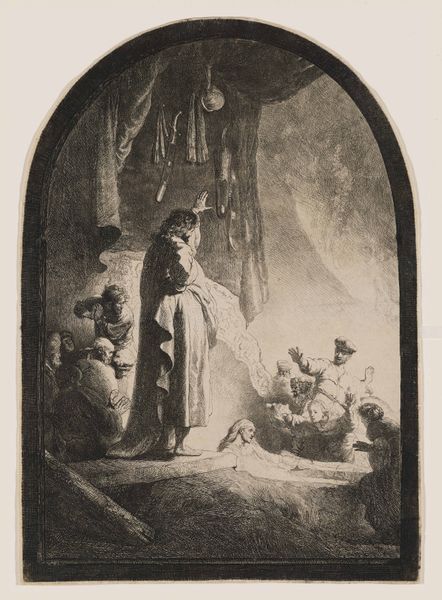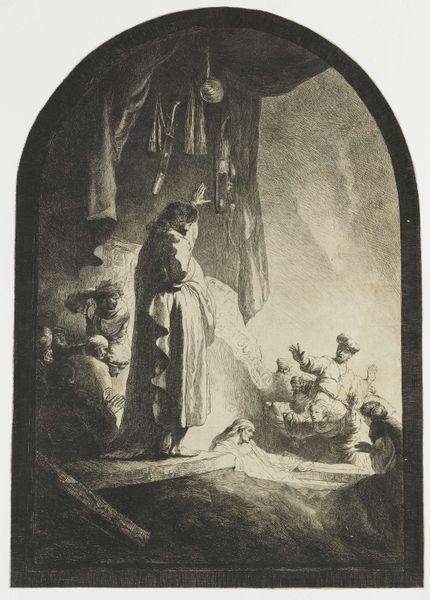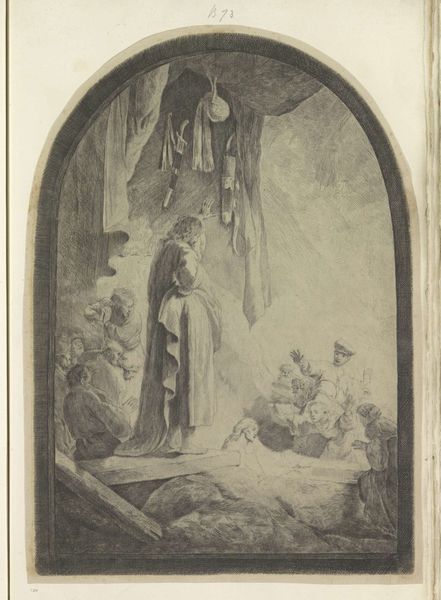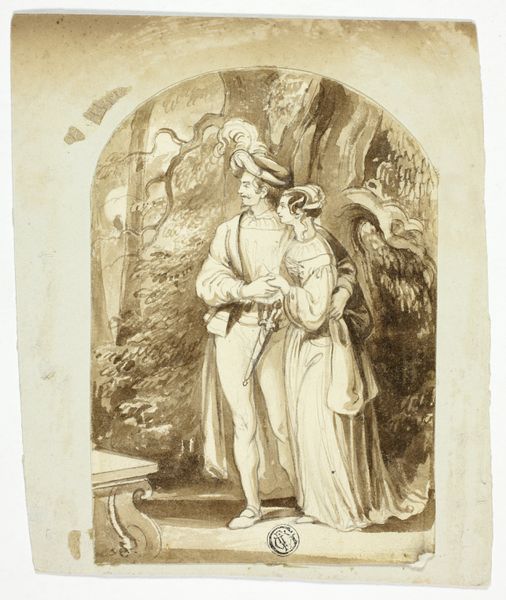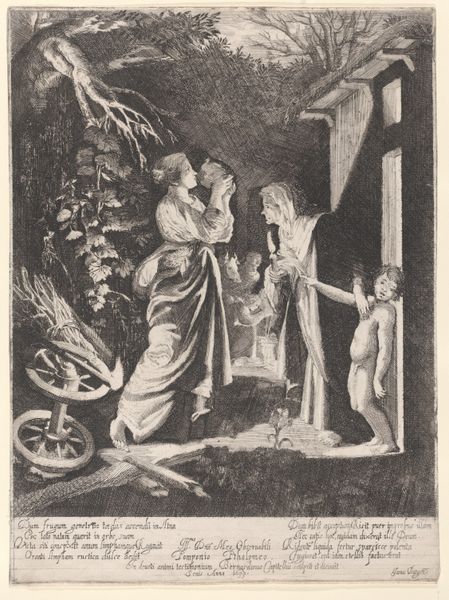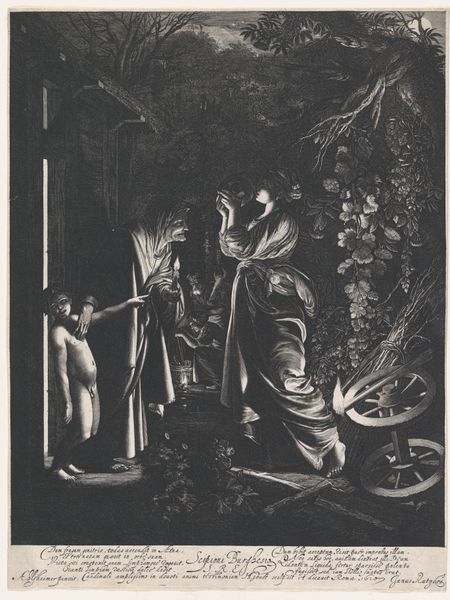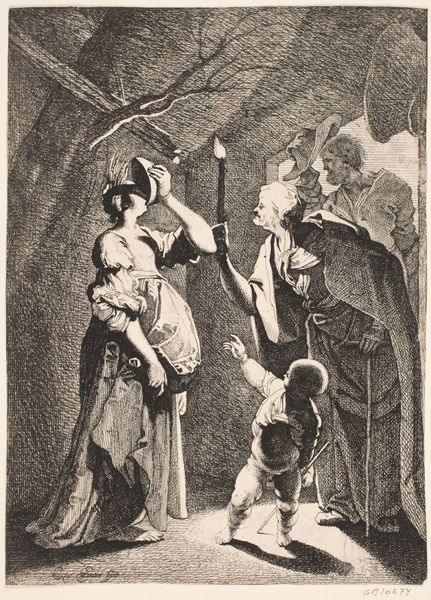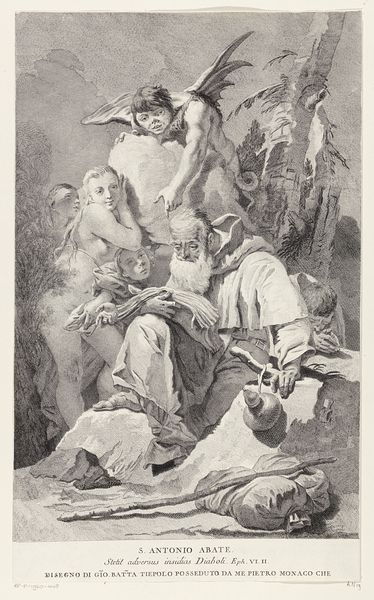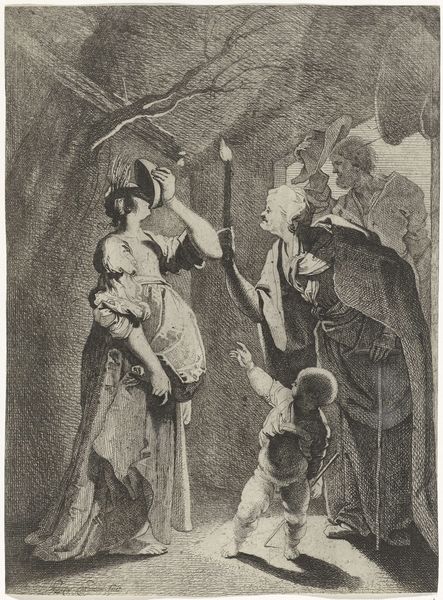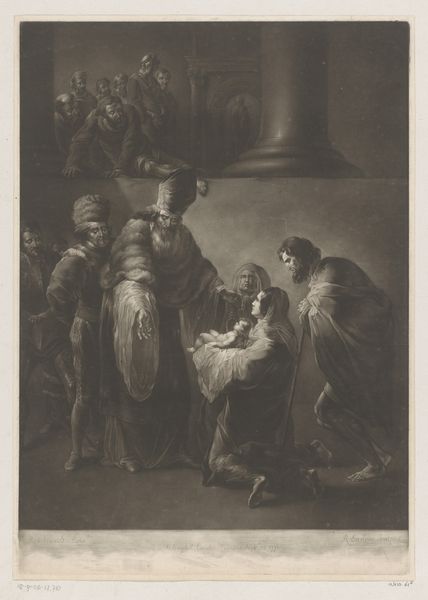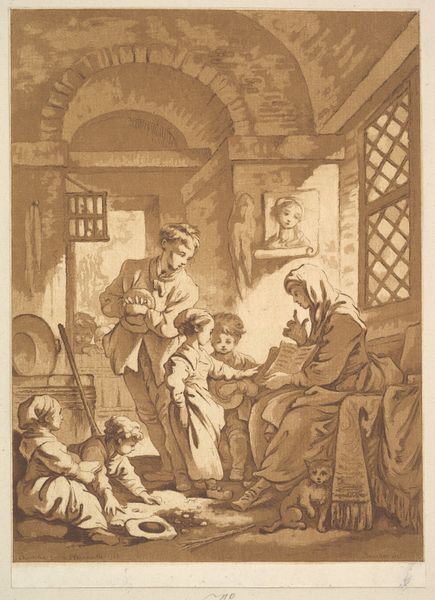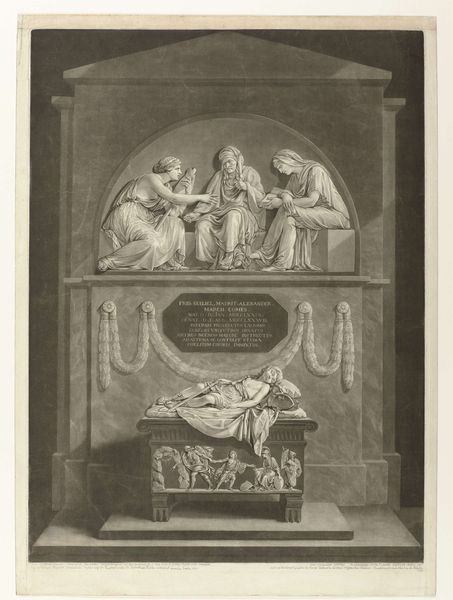
print, etching, engraving
#
narrative-art
#
baroque
# print
#
etching
#
history-painting
#
engraving
Dimensions: 372 mm (height) x 260 mm (width) (bladmaal), 366 mm (height) x 258 mm (width) (plademaal)
Curator: Rembrandt van Rijn's etching and engraving from 1632, "The Raising of Lazarus: The Larger Plate," now housed in the Statens Museum for Kunst, powerfully depicts the biblical miracle. The drama captured through the chiaroscuro lighting immediately grabs my attention. Editor: The overwhelming sense of awe and terror is so palpable. The composition, though asymmetrical, seems deliberately unbalanced. Lazarus appears almost ghostlike as he emerges, a disturbing juxtaposition against the intensely shadowed onlookers. Curator: Absolutely. Rembrandt masterfully uses light to stage the scene, positioning Lazarus almost centrally, radiating outwards. We see the story dramatized through a lens of Baroque art: think theatrics, contrast, movement. How is it shaping perceptions around religious subjects, the potential for human agency, or doubt itself? Editor: It raises intriguing questions around power, doesn’t it? The almost clinical display of Lazarus’ resurrection—the tools hanging on the wall like in an operating theater—introduces a certain scientific lens into the traditionally divine. Curator: The positioning of the viewers within this scene is vital to note too, they embody skepticism, some retreat in horror and disbelief. And beyond this very moment, the engraving itself becomes a medium. Consider printmaking within 17th-century Europe, functioning not only for an artwork but also for documentation, dissemination, education, political critique, memorializing, so this Biblical image could reach wider audiences. Editor: Precisely! The democratization of art through prints allowed religious and socio-political ideas to spread like wildfire. Lazarus rising can also symbolize breaking social constraints—literally and figuratively being ‘resurrected’ from oppressive norms. I consider too, who has typically told these stories, and the inherent patriarchal power dynamics involved. Curator: Indeed. And Rembrandt was consciously situating himself within the traditions of history painting. Editor: For me, it feels like the raising of awareness, of confronting death and its social implications; this print captures a pivotal shift, inviting audiences to challenge old perceptions and welcome transformative possibilities. Curator: I appreciate how the engraving embodies complex debates and offers multiple avenues of interpretation to viewers—then, and now.
Comments
No comments
Be the first to comment and join the conversation on the ultimate creative platform.
